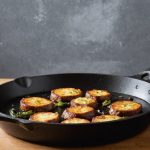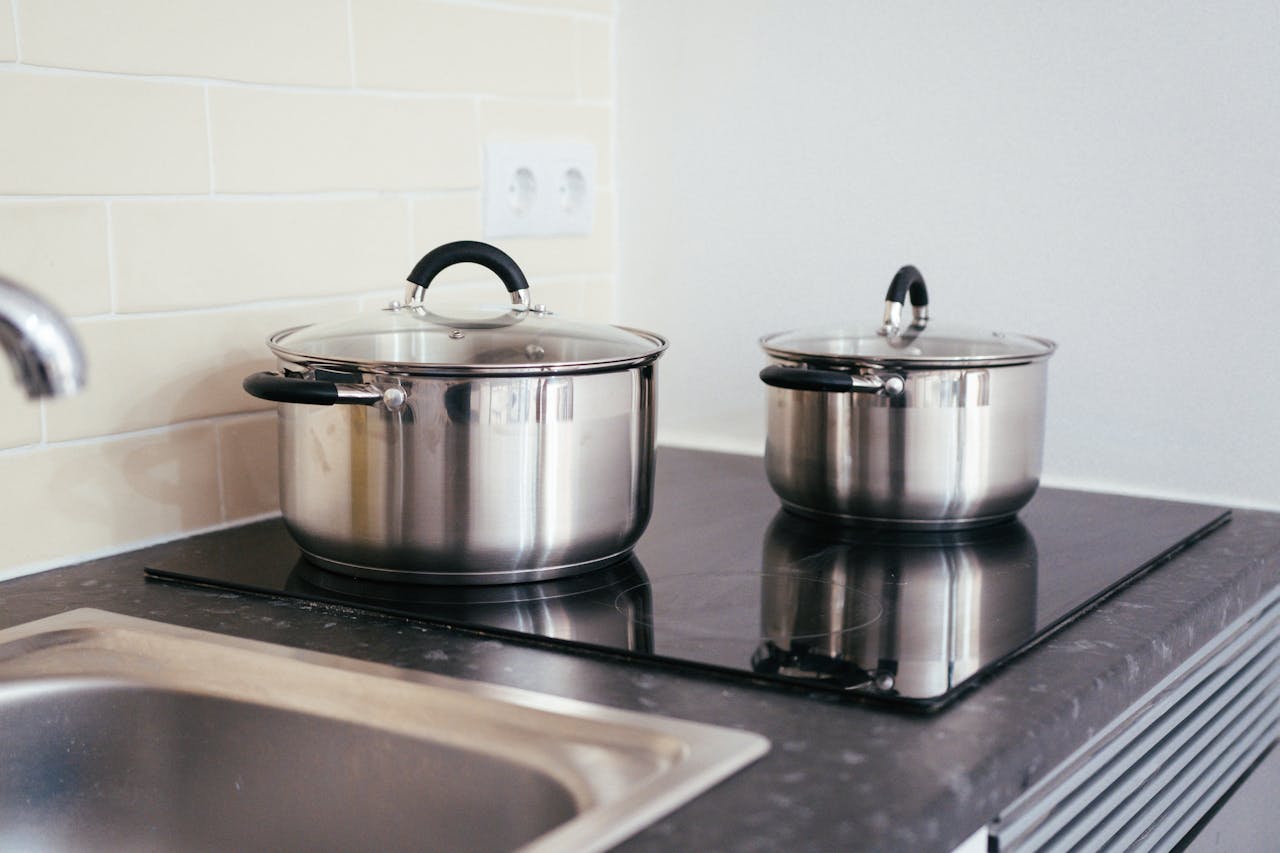When it comes to investing in cookware for your kitchen, the choices can be overwhelming. Among the various options available, two key contenders that hold their grounds are copper and stainless steel. To make an informed decision, it helps to understand the different aspects related to these two materials, including heat distribution, safety, durability, and maintenance. This article will delve into these aspects, helping you determine the best fit for your cooking needs.
Heat Distribution and Cooking Performance
When you’re cooking up a storm in the kitchen, nothing beats an evenly heated pan. The ability to distribute heat uniformly across the pan surface can make the difference between a delicious, evenly-cooked meal and a disappointing one.
Also read : Which dishwasher settings are best for delicate glassware?
Copper pans are known for their excellent heat conductivity. They rapidly respond to changes in heat, making them ideal for precise temperature control. Whether you’re searing a steak or simmering a delicate sauce, copper pan can deliver high performance.
Stainless steel pans, on the other hand, do not conduct heat as efficiently as copper. They take longer to heat up and cool down. However, this can be an advantage for recipes that require slow, steady heat.
Additional reading : Which dishwasher settings are best for delicate glassware?
Many stainless steel pans come in a multi-layered or ‘clad’ design with aluminum or copper core sandwiched between layers of stainless steel. This enhances their heat conductivity, offering the best of both worlds – the durability of stainless steel and the heat distribution of copper or aluminum.
Durability and Maintenance
When investing in a cookware set, you’d want it to last. Here, stainless steel takes the lead. It is resistant to scratches, dents, and can withstand high heat and heavy use. Moreover, it doesn’t react with food, keeping flavors pure and uncontaminated.
Copper, although extraordinarily beautiful and efficient, requires more upkeep. It is a softer metal, making it more susceptible to scratches and dents. Furthermore, it can react with acidic foods, which can lead to a metallic taste. To prevent this, copper pans often have a thin layer of stainless steel or tin inside.
Maintenance-wise, copper pans need regular polishing to maintain their shiny appearance, while stainless steel can easily be cleaned with standard dish soap or a stainless steel cleaner.
Safety in Use
Cooking should not compromise your health, and the safety of your cookware plays a significant role in this.
While both copper and stainless steel are generally safe for cooking, untreated copper can leach into food, especially when cooking acidic ingredients. This is why most copper cookware is lined with stainless steel or tin. On the brighter side, copper has natural antimicrobial properties, which adds to the cleanliness of your kitchen.
Stainless steel is considered one of the safest materials for cookware. It does not react with food or emit any harmful fumes, even at high temperatures. Some people may worry about nickel and chromium leaching from stainless steel, but the amount is insignificantly small and not harmful in a normal cooking environment.
Compatibility with Induction Cooktops
Induction cooking is becoming increasingly popular due to its efficiency and safety. Not all cookware sets are compatible with induction cooktops, though.
Stainless steel pans with a magnetic base are suitable for induction cooktops. However, copper pans typically do not work with induction, as copper is not magnetic. If you have an induction cooktop or plan to get one, you’ll need to consider this factor.
Cost Considerations
Finally, you might want to consider the price before choosing your cookware set. Copper is a premium material, and hence, copper pans are usually more expensive than stainless steel ones. However, their excellent cooking performance and aesthetic appeal can justify the higher cost for many.
Stainless steel sets, being more affordable and durable, offer great value for money, particularly for those on a budget or those seeking long-lasting cookware.
In conclusion, both copper and stainless steel have their unique advantages and trade-offs. The choice between the two depends on your personal cooking style, budget, and maintenance preference. Whether you choose a copper or stainless steel cookware set, both can deliver professional cooking results in your home kitchen.
Influence on Flavors and Aesthetics
In the realm of cookware, another important factor is how it can affect the flavors of your dishes and how it looks in your kitchen.
Copper cookware, with its high heat distribution, has a definite edge in terms of flavor enhancement. The rapid and even heat transfer allows the ingredients to cook uniformly. This can enhance the flavors and textures of your dishes, making them taste better. However, copper can react with acidic ingredients, which can lead to a metallic taste if the pan is not lined with another material like stainless steel or tin.
In terms of aesthetics, copper pans, with their shiny, polished exterior, can add a touch of elegance and sophistication to your kitchen. However, maintaining this shiny appearance requires regular polishing, which could be seen as a chore by some.
On the other hand, stainless steel cookware does not alter the flavor of the food. As it does not react with any food, you’re ensured pure and uncontaminated flavors. This is particularly important if you’re cooking delicate dishes where the ingredients’ natural flavors should shine through.
Stainless steel sets are typically more minimalist in their appearance. They may not have the same lustrous appeal as copper, but their sleek and modern look can still enhance the aesthetics of your kitchen. Plus, they require less maintenance to keep their look, which is a bonus for those who prefer low-maintenance kitchenware.
Versatility and Professional Chefs’ Opinions
When it comes to versatility, stainless steel has a slight edge. It is compatible with all types of cooking surfaces, including induction, gas, and electric stoves. Stainless steel can also go from stovetop to oven without any issue, which is not the case for some copper pots and pans. This makes stainless steel a flexible choice suitable for various cooking techniques, from sauteing and frying to broiling and baking.
Professional chefs often have mixed opinions when it comes to choosing between copper and stainless steel. Some swear by the superior heat distribution and aesthetic appeal of copper cookware. However, many prefer stainless steel for its durability, maintenance ease, and versatility.
For instance, renowned chef Russell Kilgore prefers multi-layered stainless steel pans for his professional kitchen. He believes that tri-ply stainless steel cookware offers excellent heat distribution and longevity, making it a cost-effective choice for restaurants.
The kind of cookware set you choose truly depends on your cooking style, budget, and preference. Whether you go for a copper set for its high heat conductivity and aesthetic appeal or a stainless steel set for its durability, versatility, and ease of maintenance, remember that even the best pots and pans are only as good as the chef who uses them.
Conclusion
Deciding whether to invest in a copper or stainless steel cookware set for professional cooking results at home depends on various factors. If you value superior heat distribution, enhanced flavors, and elegant aesthetics, a copper cookware set may be the best choice for you. However, if durability, non-reactivity with food, versatility, and maintenance ease are more critical to your cooking needs, a stainless steel set would be a more suitable option.
While professional chefs like Russell Kilgore prefer stainless steel for its longevity and heat distribution, the choice truly lies in the hand of the user. The most important thing is to choose a cookware set that meets your unique cooking needs, style, and budget. Whether it’s a high-quality copper set or a durable stainless steel one, with the right skills and passion, you can achieve professional cooking results in your home kitchen.






